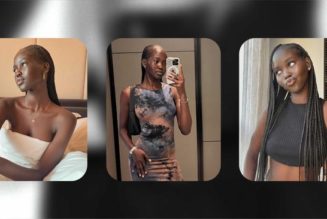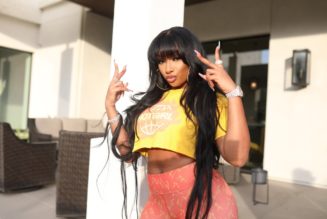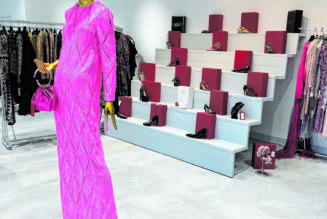
Whether it’s the automotive industry or hospitality, the success factors for premium and luxury brands have changed dramatically. This reflects a wider shift that is not only driven by the arrival of Gen Z but also new technologies. We live in an algorithm-driven world in which AI based programs decide which information we consume when we read news aggregators or engage in social media.
Given that over 95 percent of luxury purchase decisions originate during the digital journey, the new savoir-faire in creating extreme value is the ability to connect with audiences on an emotional level. To create so much cultural relevance that a match between the audience and the brand happens naturally.
Luxury brands have always been associated with prestige, exclusivity, and high quality. However, in today’s rapidly-changing world, these traditional markers of luxury are no longer sufficient to capture the attention and loyalty of consumers. To succeed in the long term, luxury brands must go beyond the material aspects of their products and services and tap into the power of cultural capital. In other words, they need to create meaningful and relevant connections with consumers that go beyond the transactional level and resonate with their values, beliefs, and aspirations.
Here are three ways how luxury brands can do that:
Know your narrative
First, have full clarity on their story. While most brands are convinced that they do it, very few describe their brands emotionally with sufficient precision. Most brands can describe what they do from an internal perspective and talk in terms of “we,” but very few are able to articulate their positioning from the external perspective of their clients.
In other words, they are unable to state in one sentence how they impact the lives of their clients. The reason is that until only two or three years ago, traditional brand storytelling was sufficient. To create cultural capital today, the story needs to position the brand into the emotional realm of the clients. It’s a fundamentally different approach that only a few brands have mastered.
This also includes embracing diversity and inclusivity; luxury brands can no longer afford to cater exclusively to a narrow segment of consumers based on their age, gender, ethnicity, or nationality. Instead, they need to acknowledge and celebrate the diversity of their audience and engage with them on their own terms. This requires a deep understanding of cultural nuances and sensitivities, as well as a willingness to challenge the status quo and embrace new perspectives. I do workshops on cultural empathy with a lot of leading luxury brands, because it’s very challenging to understand emotionally the mindset of a client in Dubai, India, or China far away from New York or Paris.
Lastly, the story needs to be transmitted in every client interaction. I recently stayed at the self-proclaimed top property of one of the most prestigious hotel brands in the world. While the property was undoubtedly beautiful and had stunning views and the staff was extremely friendly, I missed any specific brand-related emotional points.
So many brands miss the mark here. They overly rely on investments in real estate, design, and technology, but then are unable to create magic in a brand-specific way. What they forget is that magic needs a script and the script has to follow the brand’s emotional playbook. Without it, there is no cultural capital.
Encourage and invest in innovation
Second, foster creativity and innovation. Luxury brands that rely solely on their heritage and legacy risk becoming stagnant and irrelevant in the eyes of younger and more dynamic consumers. To stay ahead of the game, they need to foster a culture of creativity and innovation that allows them to experiment, iterate, and adapt to changing tastes and trends. This means investing in research and development, collaborating with external partners, and being open to new ideas and approaches.
What is critical is that collaborations always need to be intentional. Too often I see collaborations where the brand fit does not make sense or where the outcome is too obvious. If a luxury sports car brand collaborates with a luggage company and creates co-branded luggage, there is no innovation and limited excitement. This is often a missed opportunity to create cultural capital.
Be social and sustainability-savvy
Third, support social and environmental causes. Luxury brands have a unique opportunity and responsibility to make a positive impact on society and the planet. By aligning themselves with social and environmental causes that matter to their consumers, they can create a sense of purpose and meaning that transcends their products and services. This requires a genuine commitment to sustainability, ethical sourcing, and transparency, as well as a willingness to use their influence and resources to drive positive change.
In conclusion, cultural capital is the new currency of luxury, and brands that fail to recognize and leverage its power risk losing relevance in the eyes of consumers. By embracing storytelling and storytelling-execution in every service aspect, fostering creativity and innovation, and supporting social and environmental causes, luxury brands can create lasting, meaningful connections with their audience.
This is an opinion piece where all views expressed belong to the author.
Named one of the “Global Top Five Luxury Key Opinion Leaders to Watch,” Daniel Langer is the CEO of the luxury, lifestyle and consumer brand strategy firm Équité, and the executive professor of luxury strategy and pricing at Pepperdine University in Malibu, California. He consults many of the leading luxury brands in the world, is the author of several best-selling luxury management books, a global keynote speaker, and holds luxury masterclasses on the future of luxury, disruption, and the luxury metaverse in Europe, the USA, and Asia.
Follow him: LinkedIn: https://www.linkedin.com/in/drlanger, Instagram: @equitebrands /@thedaniellanger









